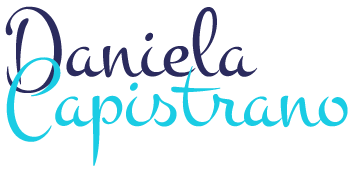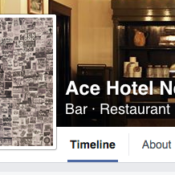Blog
 If you aren't familiar with this free service, Hangouts On Air allows you to to record a video live from your Google+ profile page (Google's answer to Facebook), which you can invite a set amount of people to participate in as other live recordings, all in real time. While you and your guests (optional) interact on screen in real time, anyone from around the world can watch and live chat with you (the host), and other viewers within Google+.
There isn't a single strategy that will fit the needs of every government agency, non-profit and activist, but here are some ideas for using Google+ Hangouts On Air to meet your mission:
1. Education
Classes and skillshares that anyone can attend. Town halls. Roundtables on any topic. These are just a few ways that people are already using Google+ Hangouts On Air to provide free info to participants and viewers.
Since I live in NYC, here are a few location-specific examples of ways I'd like to see government agencies, non-profits/activists use this service:
Community Board Training: Being a New Yorker means playing an active role in shaping your local communities, and one way to do this is to get involved with your local community board. Many people have no idea what a community board does or how to join one.
To address this, the Mayor's Community Affairs Unit should set up a G+ page and host a "Intro to Community Boards: What They Are, What They Do, And How To Join One" Hangouts On Air session. The nine live streaming participants could be representatives from each borough and other special guests who give examples of the incredible work community boards do, their challenges and ways to support your community board.
The Mayor's Community Affairs Unit could incentify people to watch and participate by opening a drawing to verified participants so they have the chance to be profiled by NYC Media in a series on Community Board history, works in progress and those who participate. Their video comments and suggestions could be incorporated into the series.
Social media guidelines and policies for government agencies often don't include protocol for experimenting with new services. If you work for a government agency, make sure you clear your usage in advance and test Google+ Hangouts On Air internally before scheduling something for the general public.
Tip: Up to nine people can join you in a Hangout On Air as another recorded stream below yours. You can't reserve a seat for other users but you can schedule/manage invites for Google Hangouts by syncing them to a Google calendar. However, an unlimited amount of people can watch the livestream and participate in the related (optional) chat, and many folks just want to lurk/watch anyway.
Harnessing Collective Intelligence In Real-Time To Overcome Obstacles. How often does your organization do that? I capitalized every word because I wish that more non-profits took advantage of the great ideas their allies and even critics have to improve services and outreach strategies. Sometimes the answer is right under your nose -- and it's not always a staff member who has the best solution.
Example: Right now a big focus within the Occupy movement is next steps. Where do we go from here? Not everyone can make the New York City General Assembly meetings in person, but that doesn't mean they don't support Occupy or the working groups.
If you can respect different communication styles, most people are willing to share their ideas. Luckily, Google+ Hangouts On Air offers the following options to participate in a hangout: 1) be on camera/live participant, 2) lurk/just watch the livestream while chatting with viewers and video participants or 3) just lurk/watch, no interaction.
To help make the NYCGA more inclusive and to raise awareness, each working group should host a monthly public Google+ Hangouts On Air that provides a general rundown of the latest achievements of that working group, what's to come, and then open the floor to feedback, suggestions and volunteer recruitment. Viewers can share ideas that working group volunteers round up from the chat, G+ thread comments and on camera statements while logging in real-time in a public Google Doc/some other real-time word processing service that they can reference later for planning purposes.
People will still (and should) attend working group meetings in person, but having a virtual option to participate will help build a critical mass.
Leading into the topic of awareness, journalists would have an easier time identifying working group leaders and following their progress, which could translate to more coverage of the movement based on working group activities.
2. Fundraising
I'm big on a value mindset versus a transactional mindset. To put it simply, it turns me off when non-profits hound me for donations for services I don't even understand or that don't apply to me. I think it's important to establish a relationship with your allies where their donations are a part (important -- but still just a part) of their ongoing relationship with the non-profit, but not the only part.
More on that later, but for the purposes of this post, non-profits who use Hangouts should always consider how fundraising can work within that experience.
A very basic/uninteresting way to fundraise through Hangouts On Air is, during varying intervals within the livestream broadcast, have the host/s toss to a link to a donation page shared within the chat or on-screen to encourage viewers to give what they can.
To make this more fun and interactive for Hangouts On Air participants, you could involve a sponsor who agrees to match all or a percentage of donations that happen as a result of the Hangouts On Air and promote that element in creative ways.
In a more extreme example, you could create your own version of a telethon, mixing real-time performances, special guests and infographics sharing valuable info about your efforts comprise the elements of your real-time fundraising drive. You can set goals within a range of time for that day, and use other social networks like Facebook and micro-blogging sites like Twitter to drive attention to the fundraising drive through hashtags, photos and other promotional tactics. This would obviously require a lot of planning in advance.
Tip: Amplify your activity on Twitter by creating a fundraising hashtag and encouraging people to tweet their messages of support with the Hangouts On Air live link.
3. Engagement and Community Building
I've noticed that many non-profits struggle with finding effective ways to get their existing community of allies to help recruit new members/supporters or to spread information in conjunction with time-sensitive campaign efforts. They often focus on the general public first, rather than turning inward and empowering their community to share important information with THEIR networks. So often even the people who work for the non-profits aren't active in promoting their own efforts on their social channels.
If you are a non-profit with a paid member base, use Google+ Hangouts On Air to make your members feel more involved in everything -- from day-to-day operations to event strategy (in doses and frequencies that work for you). Show that you value your paid members' time and dedication by creating a private Google+ Hangouts On Air event for members that gives them the opportunity to interact with the organization's leaders. This is also a useful tactic for board members or alumni.
Example: Set up and invite your paid members to an invite-only/private quarterly "Ask Our Executive Director Anything" Q&A session. The video participants can be other staff who can help field questions and moderate the chat. Make your members feel like their input matters and be sure to follow up on their suggestions in a timely manner so that members know their input in valued, even if their suggestion doesn't work for the organization. Scale an event like this to what you can support; if you have a member base of thousands or millions, you may way to instead focus your invites to members with a history of support or who demonstrated potential to be a source of real support.
Tip: It's important to remember that using Google+ Hangouts On Air makes you obligated to follow their Terms of Service. If you host a Hangout On Air that is found to violate Google's Terms of Service, your broadcast will be terminated (if the video is reported during a live broadcast). The Google+ post will still be available but, no one will be able to play the video and a recording of the Hangout On Air will not be made available. Also your access to Hangouts On Air will be restricted.
Other livestreaming sites do less policing of content, so if you're looking for a livestreaming service that won't care if you incorporate copyrighted material into your broadcast, Google+ Hangouts On Air may not be the solution for you but luckily there are many other options out there.
4. Learning New Outreach Methods: Free Case Studies
YouTube stars and mainstream celebs have been using traditional Hangouts to connect with their fans for a while now, and lately non-profits such as Ghetto Film School have been dipping their social media toes in the livestream waters to raise awareness about their services and to build community. Even President Barack Obama is using Hangouts.
You should experiment with Google+ Hangouts On Air internally before hosting your first public broadcast to work out any tech bugs or logistical issues. But more important than that, see what others are doing and how you can adopt their methods to meet your needs.
Reinventing the wheel is a waste of time and some quick Google searches can lead you to many archived Google+ Hangouts On Air sessions to take notes from.
5. Brand Awareness
If the potential funders, industry leaders and future allies you are attempting to court are on Google+, you should be too. If you're a non-profit, designate someone who is part of the team responsible for communications to follow relevant threads on G+ based on saved searches and add valuable commentary. Over time, your organization can establish itself as an authority on specific topics, and where it's appropriate to do so, you can share links to your Hangout event details on other threads.
Don't just sign up for Google+ to host Hangouts. Set aside time (daily, weekly, monthly) to participate in relevant conversations in the space so that you increase the amount of people adding your brand page to their circles, where they in turn can share your updates with their other circles.
Getting Started With Google+ Hangouts On Air
It's very easy to create your own Hangouts On Air session. Follow the steps in this video:
If you aren't familiar with this free service, Hangouts On Air allows you to to record a video live from your Google+ profile page (Google's answer to Facebook), which you can invite a set amount of people to participate in as other live recordings, all in real time. While you and your guests (optional) interact on screen in real time, anyone from around the world can watch and live chat with you (the host), and other viewers within Google+.
There isn't a single strategy that will fit the needs of every government agency, non-profit and activist, but here are some ideas for using Google+ Hangouts On Air to meet your mission:
1. Education
Classes and skillshares that anyone can attend. Town halls. Roundtables on any topic. These are just a few ways that people are already using Google+ Hangouts On Air to provide free info to participants and viewers.
Since I live in NYC, here are a few location-specific examples of ways I'd like to see government agencies, non-profits/activists use this service:
Community Board Training: Being a New Yorker means playing an active role in shaping your local communities, and one way to do this is to get involved with your local community board. Many people have no idea what a community board does or how to join one.
To address this, the Mayor's Community Affairs Unit should set up a G+ page and host a "Intro to Community Boards: What They Are, What They Do, And How To Join One" Hangouts On Air session. The nine live streaming participants could be representatives from each borough and other special guests who give examples of the incredible work community boards do, their challenges and ways to support your community board.
The Mayor's Community Affairs Unit could incentify people to watch and participate by opening a drawing to verified participants so they have the chance to be profiled by NYC Media in a series on Community Board history, works in progress and those who participate. Their video comments and suggestions could be incorporated into the series.
Social media guidelines and policies for government agencies often don't include protocol for experimenting with new services. If you work for a government agency, make sure you clear your usage in advance and test Google+ Hangouts On Air internally before scheduling something for the general public.
Tip: Up to nine people can join you in a Hangout On Air as another recorded stream below yours. You can't reserve a seat for other users but you can schedule/manage invites for Google Hangouts by syncing them to a Google calendar. However, an unlimited amount of people can watch the livestream and participate in the related (optional) chat, and many folks just want to lurk/watch anyway.
Harnessing Collective Intelligence In Real-Time To Overcome Obstacles. How often does your organization do that? I capitalized every word because I wish that more non-profits took advantage of the great ideas their allies and even critics have to improve services and outreach strategies. Sometimes the answer is right under your nose -- and it's not always a staff member who has the best solution.
Example: Right now a big focus within the Occupy movement is next steps. Where do we go from here? Not everyone can make the New York City General Assembly meetings in person, but that doesn't mean they don't support Occupy or the working groups.
If you can respect different communication styles, most people are willing to share their ideas. Luckily, Google+ Hangouts On Air offers the following options to participate in a hangout: 1) be on camera/live participant, 2) lurk/just watch the livestream while chatting with viewers and video participants or 3) just lurk/watch, no interaction.
To help make the NYCGA more inclusive and to raise awareness, each working group should host a monthly public Google+ Hangouts On Air that provides a general rundown of the latest achievements of that working group, what's to come, and then open the floor to feedback, suggestions and volunteer recruitment. Viewers can share ideas that working group volunteers round up from the chat, G+ thread comments and on camera statements while logging in real-time in a public Google Doc/some other real-time word processing service that they can reference later for planning purposes.
People will still (and should) attend working group meetings in person, but having a virtual option to participate will help build a critical mass.
Leading into the topic of awareness, journalists would have an easier time identifying working group leaders and following their progress, which could translate to more coverage of the movement based on working group activities.
2. Fundraising
I'm big on a value mindset versus a transactional mindset. To put it simply, it turns me off when non-profits hound me for donations for services I don't even understand or that don't apply to me. I think it's important to establish a relationship with your allies where their donations are a part (important -- but still just a part) of their ongoing relationship with the non-profit, but not the only part.
More on that later, but for the purposes of this post, non-profits who use Hangouts should always consider how fundraising can work within that experience.
A very basic/uninteresting way to fundraise through Hangouts On Air is, during varying intervals within the livestream broadcast, have the host/s toss to a link to a donation page shared within the chat or on-screen to encourage viewers to give what they can.
To make this more fun and interactive for Hangouts On Air participants, you could involve a sponsor who agrees to match all or a percentage of donations that happen as a result of the Hangouts On Air and promote that element in creative ways.
In a more extreme example, you could create your own version of a telethon, mixing real-time performances, special guests and infographics sharing valuable info about your efforts comprise the elements of your real-time fundraising drive. You can set goals within a range of time for that day, and use other social networks like Facebook and micro-blogging sites like Twitter to drive attention to the fundraising drive through hashtags, photos and other promotional tactics. This would obviously require a lot of planning in advance.
Tip: Amplify your activity on Twitter by creating a fundraising hashtag and encouraging people to tweet their messages of support with the Hangouts On Air live link.
3. Engagement and Community Building
I've noticed that many non-profits struggle with finding effective ways to get their existing community of allies to help recruit new members/supporters or to spread information in conjunction with time-sensitive campaign efforts. They often focus on the general public first, rather than turning inward and empowering their community to share important information with THEIR networks. So often even the people who work for the non-profits aren't active in promoting their own efforts on their social channels.
If you are a non-profit with a paid member base, use Google+ Hangouts On Air to make your members feel more involved in everything -- from day-to-day operations to event strategy (in doses and frequencies that work for you). Show that you value your paid members' time and dedication by creating a private Google+ Hangouts On Air event for members that gives them the opportunity to interact with the organization's leaders. This is also a useful tactic for board members or alumni.
Example: Set up and invite your paid members to an invite-only/private quarterly "Ask Our Executive Director Anything" Q&A session. The video participants can be other staff who can help field questions and moderate the chat. Make your members feel like their input matters and be sure to follow up on their suggestions in a timely manner so that members know their input in valued, even if their suggestion doesn't work for the organization. Scale an event like this to what you can support; if you have a member base of thousands or millions, you may way to instead focus your invites to members with a history of support or who demonstrated potential to be a source of real support.
Tip: It's important to remember that using Google+ Hangouts On Air makes you obligated to follow their Terms of Service. If you host a Hangout On Air that is found to violate Google's Terms of Service, your broadcast will be terminated (if the video is reported during a live broadcast). The Google+ post will still be available but, no one will be able to play the video and a recording of the Hangout On Air will not be made available. Also your access to Hangouts On Air will be restricted.
Other livestreaming sites do less policing of content, so if you're looking for a livestreaming service that won't care if you incorporate copyrighted material into your broadcast, Google+ Hangouts On Air may not be the solution for you but luckily there are many other options out there.
4. Learning New Outreach Methods: Free Case Studies
YouTube stars and mainstream celebs have been using traditional Hangouts to connect with their fans for a while now, and lately non-profits such as Ghetto Film School have been dipping their social media toes in the livestream waters to raise awareness about their services and to build community. Even President Barack Obama is using Hangouts.
You should experiment with Google+ Hangouts On Air internally before hosting your first public broadcast to work out any tech bugs or logistical issues. But more important than that, see what others are doing and how you can adopt their methods to meet your needs.
Reinventing the wheel is a waste of time and some quick Google searches can lead you to many archived Google+ Hangouts On Air sessions to take notes from.
5. Brand Awareness
If the potential funders, industry leaders and future allies you are attempting to court are on Google+, you should be too. If you're a non-profit, designate someone who is part of the team responsible for communications to follow relevant threads on G+ based on saved searches and add valuable commentary. Over time, your organization can establish itself as an authority on specific topics, and where it's appropriate to do so, you can share links to your Hangout event details on other threads.
Don't just sign up for Google+ to host Hangouts. Set aside time (daily, weekly, monthly) to participate in relevant conversations in the space so that you increase the amount of people adding your brand page to their circles, where they in turn can share your updates with their other circles.
Getting Started With Google+ Hangouts On Air
It's very easy to create your own Hangouts On Air session. Follow the steps in this video:
Related Articles
She was a slow moving but determined deluge of discontent on the subway platform, clenched and quivering jaw. Lethargic (she Read more
Doing remote production is a fairly new thing in my life. I've only experienced it three times so far - Read more
Dear Summer '08, If you dare to suck as much as my past three summers have, I know two ladies Read more
Dear Glogster, You have forced me to use Scrapblog purely out of necessity and these are my three reasons why: Read more
I haven't used Joost in ages. I didn't like the quality of the streaming video, that I had to constantly Read more
Undergoing MyBlogLog Verification After I bought my domain and dropped free wordpress hosting, I forgot to update several profiles (including Read more
As a devoted YouTube connoisseur, I can't help but be aware of "Fred" and his ever growing popularity. "Fred", 14-year Read more






